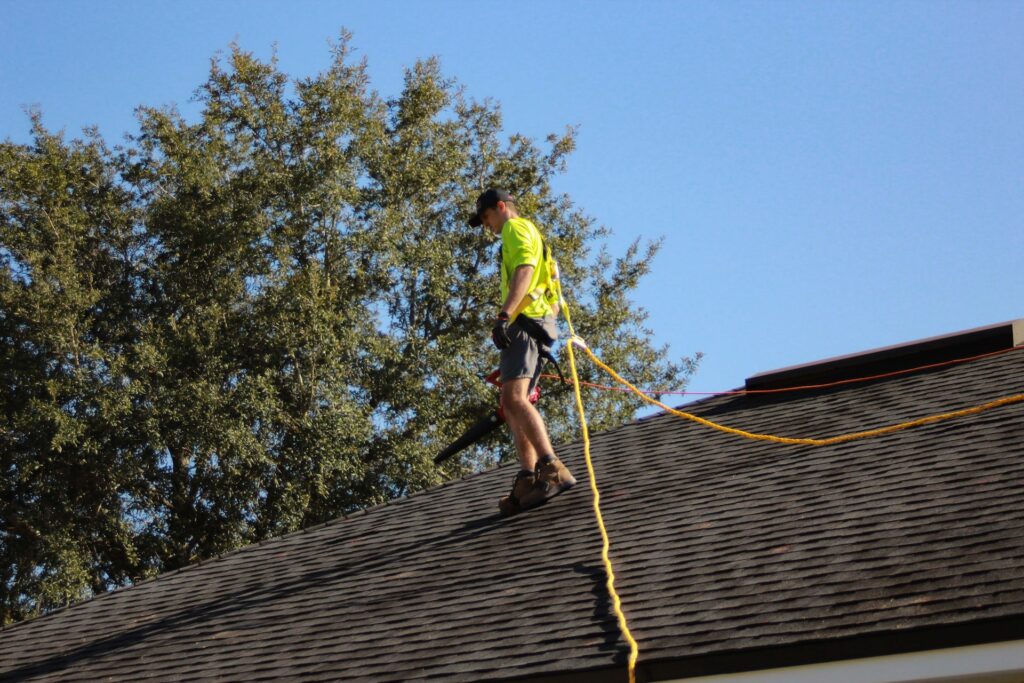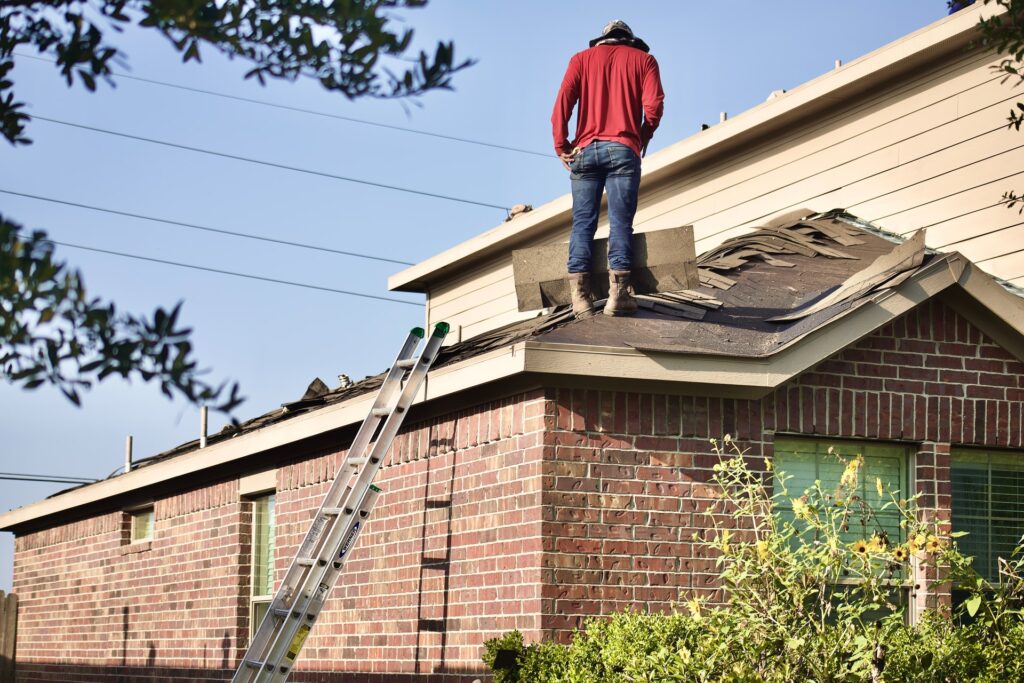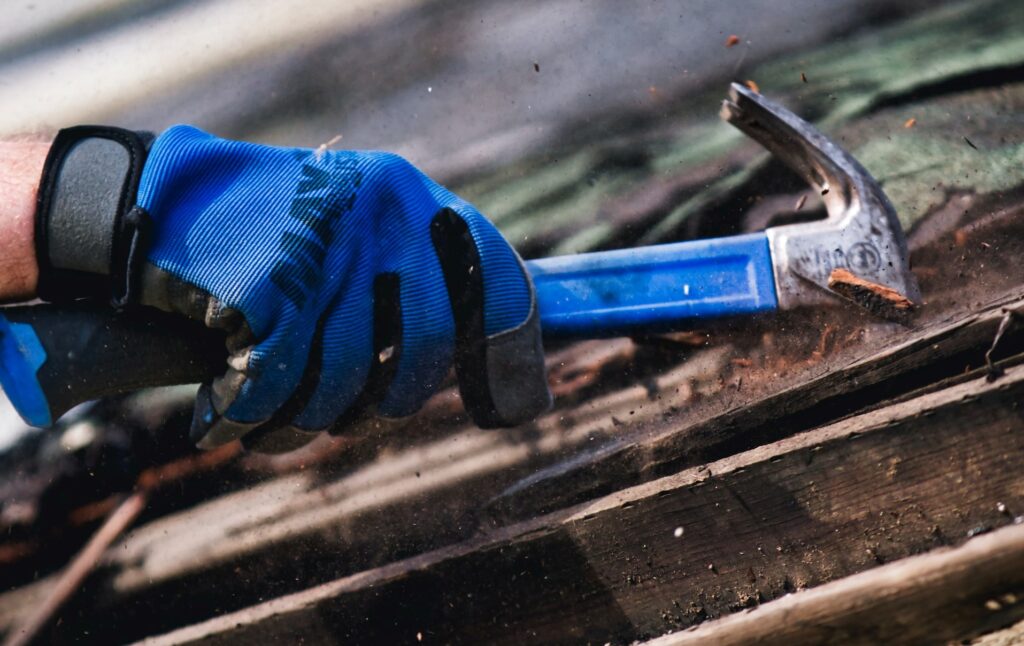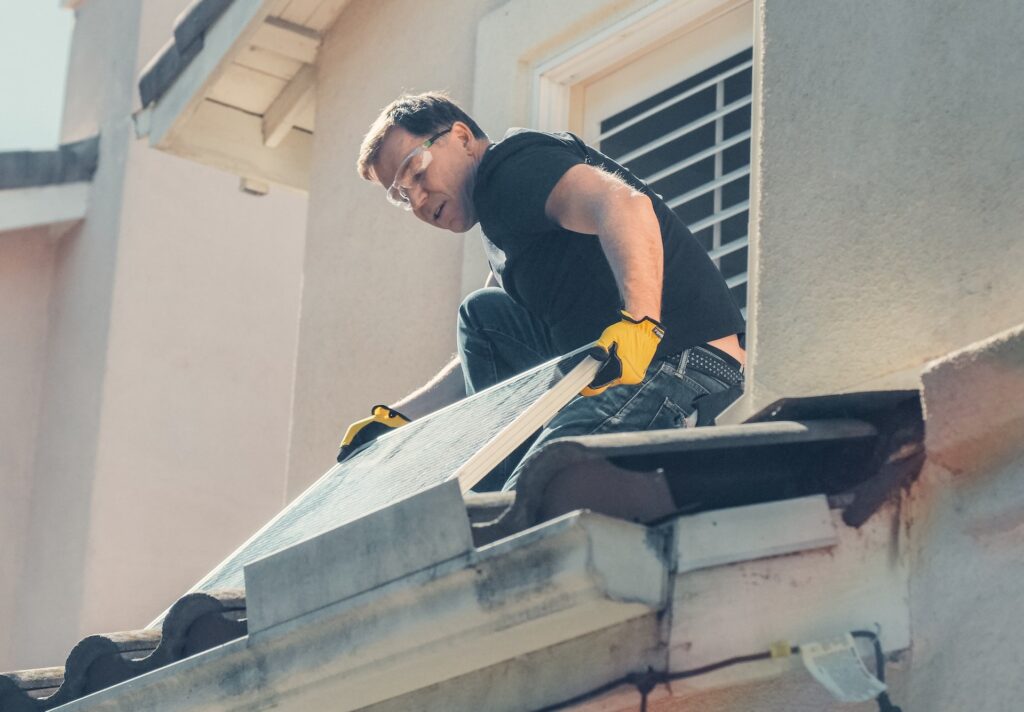
Do I Need a Permit to Replace My Roof Myself?
Having your roof replaced can be a costly project because of the need to hire contractors who can perform the work in a timely manner. Let’s say that you’re having a 1,500 square-foot roof installed on your home. The cost of labor for this type of project is usually around $1.00-$1.50 per square foot, which means that labor alone would add $1,500-$2,250 to your total project costs.
It’s possible, however, to avoid these costs by completing the installation process yourself, which is referred to as DIY roofing. Roof replacements are considered to be complex home improvement projects, which is why it’s highly recommended that you do your research before engaging in DIY roofing.
The drawbacks to completing a roof replacement on your own include the project being somewhat dangerous if you don’t have experience, the fact that you need to purchase the necessary tools for the job, and the amount of time you’ll need to spend on the project if you want to fully replace your roof without assistance from professional contractors.
If you want to replace the entirety of your roof, you will need to obtain a roofing permit, which ensures that your project adheres to California code regulations. For more minor repairs, a permit might not be necessary. On the other hand, major repairs will require a permit. Before you perform this type of project, you should know that a homeowners insurance policy doesn’t always cover DIY roofs, which is something you should ask your insurer about early on in the project.
If you make the decision to replace your roof without obtaining a permit, you could face stiff penalties and may be ordered by the city to reverse any work that you’ve done. While the process and fees for obtaining a permit can be frustrating, not having a permit will likely cause you to waste a considerable amount of time and money if this issue is identified by the city. This article guides you through the process of obtaining a permit when replacing a roof.

What Does DIY Roofing Mean?
DIY roofing involves repairing or replacing your roof without the assistance of a roofing contractor. If you want to repair your roof, complete a reroof project, or replace the entire roof, you can do so as long as you have the right tools and take the necessary precautions. There are many websites online that go into precise detail about every step that should be taken when completing a DIY roofing project.
If you want to replace the entire roof in a single-family home, you should be able to do so in around two days. During the first day of the project, you can focus solely on removing the existing roofing materials. On the second day, you’ll have the opportunity to install a completely new roof.
Keep in mind that there are some drawbacks associated with replacing your roof without any help. For one, these projects can be dangerous. If you aren’t experienced with completing roofing projects, you could be in danger of falling off your roof. Additional drawbacks include everything from needing to obtain the right tools to the possibility that your homeowners insurance policy won’t cover your roof when you repair or replace it yourself.

Replacing a Roof Can Be Dangerous
First of all, replacing a roof can be highly dangerous if you attempt to do so on your own. The majority of roofs have a slope, which can be relatively steep and may make it difficult to retain your balance while replacing roofing materials. Even professional roofers risk becoming injured when falling off a roof. Keep in mind that falls are among the most common causes of fatal accidents on construction sites.
If you’re certain that you’d rather complete a roofing project on your own, you should have a firm understanding of the dangers and how to avoid them. The amount of time a roof installation takes depends on the type of roof you’d like to make. There are many roof types you could choose to have installed on your home, which include:
- Slate roofing – These roofs are made from natural slate tiles that offer a premium appearance
- Metal roofing – This type of roofing uses metal panels that are highly resistant to inclement weather as well as high winds
- Shingles – These roofs are comprised of overlapping shingles that are available in a wide range of colors
- Fire-resistant roofs – Fire-resistant roofing usually involves a combination of clapboards and fiber cement shingles to ensure a class A fire rating
- Cool roofs – A cool roof is designed specifically to reflect a higher amount of sunlight when compared to conventional roofs, which helps keep home interiors cool
- Solar roofs – Solar shingles are made from thin photovoltaic sheets that are able to absorb sunlight that will be converted into energy for the home
The safety risks you might encounter when replacing or repairing a roof include slipping on a sloped surface during inclement weather or not having the right protective equipment on hand. It’s also possible to incorrectly repair a roof in a manner than worsens damage and leads to higher costs.

Replacing a Roof Requires Having the Right Tools
Repairing or replacing a roof requires the right tools for the job. When you hire a professional roofing company, they’ll automatically have access to nailers, scaffolding, air compressors, ladders, and laws, which the majority of homeowners don’t automatically have. Keep in mind that certain roofing materials also require special knowledge and expertise to install properly. If you’re intent on replacing your roof on your own, the primary tools that are needed for this job include:
- Roofing nail guns
- Air compressor
- Scoop shovel
- Utility knife
- Roofing shovel
- Roofing hammer
- Tarps
- Pry bar
- Chalk line tools
- Caulking gun
- Measuring tape
- Circular saw and reciprocating saw
- Drill
- Generator
- Hard hats
- Ladders
- Safety harnesses
- Personal protective equipment and roofing shoes
- Broom and rake
- Magnetic sweeper
Insurance May Not Cover DIY Roof Installation
In the event that your roof is set to be replaced because of damage, your homeowners insurance policy likely provides coverage as long as a professional roofing company completes the project. However, your insurance claim might not go through if you attempt to perform the project on your own. You’ll also find that a workmanship warranty isn’t available for DIY roof installations.
Are Permits Required To Repair a Roof or Reroof?
Permit are required if you intend to replace your roof. However, minor repairs are considered to be roof maintenance in California, which means that a permit isn’t necessary. If large portions of the roof need to be replaced, the project is considered to be a reroof, which means that you would need to apply for a permit. The general rule for building permits is that they are necessary when the work is structural in nature.

Needed Roofing Permits and California Roofing Codes
If you want to repair or reroof a home, there are a range of permits you’ll need to apply for. The primary roofing permits that might apply to your project include:
- Roofing permit – $250-$500
- Plumbing permit – $50-$500
- HVAC permit – $250-$400
If you’re set to replace your entire roof or perform substantial repair work, a roofing permit is necessary in accordance with the latest California Building Code. If you’re replacing a roof that’s sloped steeper than a 2:12 ratio on a home that’s situated to the east of Berkeley Hills/El Sobrante Ridge, the California Building Code requires that you obtain a cool roof. Roof flashing must also be installed at all roof and wall intersections as well as gutters.
What Can a Homeowner Do Without a Permit?
While the majority of roofing and home improvement project must be done with a permit, there are numerous remodeling projects you can perform on your own without having a license. These projects include:
- Install panels and trim around the baseboards or crown molding
- Install countertops
- Install flooring and carpet
- Paint walls and hang wallpaper
- Make small repairs
- Make small electrical repairs

What Happens If an Inspector Finds Unpermitted Work?
If you end up replacing the roof of your home without a permit, you could face some consequences if an inspector finds the work you’ve done. The reason that building codes exist in the first place is to make sure that any structure that’s built is safe for people to live or work in. Even if your unpermitted work has a premium quality to it, the city can’t be certain that your work is sufficient.
If you attempt to sell a home with unpermitted work, there’s a good chance that the buyer’s lender wouldn’t provide a loan that covers unpermitted work. In the event that a city inspector discovers unauthorized work, it’s likely that fines and tax penalties would be levied against you. There’s also a possibility that you would be required to demolish the unpermitted work, after which you could redo the project with the right licenses and permits in place.
If you feel like you would be able to replace your old or damaged roof on your own, this option may help you save a large sum of money. However, there are many factors that must be taken into account before you begin a project of this scope and size. Before you begin a roofing project of any kind, make sure that you apply for and obtain the necessary building permits.

Jason Somers, President & Founder of Crest Real Estate
With over 15 years of professional experience in the Los Angeles luxury real estate market, Jason Somers has the background, judgement and track record to provide an unparalleled level of real estate services. His widespread knowledge helps clients identify and acquire income producing properties and value-ad development opportunities.
Learn more about Jason Somers or contact us.



